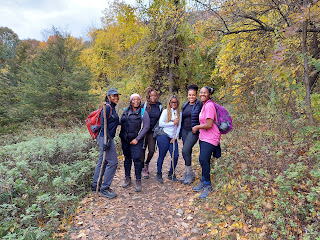How Much Water Should You Really Drink When Hiking?
When it comes to hiking, proper hydration is essential for both your comfort and safety on the trail. Water is crucial for maintaining your body's functions and regulating temperature. However, the question often arises: How much water should you really drink when hiking?
The answer isn't as straightforward as any of us would like because determining the right amount of water to carry while hiking depends on several factors, including the duration of your hike, weather conditions, terrain, your body weight, and personal hydration needs. As a general guideline, aim to drink at least half a liter (16 ounces) of water per hour during moderate hiking conditions. However, this amount can vary significantly based on individual factors and environmental conditions, for example:
- Weather and Terrain Impact on Thirst. In warmer climates or during summer hikes, your body sweats more, increasing the need for hydration. The heat and humidity can accelerate dehydration, so drink water more frequently and consider adding electrolytes to prevent cramps and maintain electrolyte balance.
- Altitude. At higher altitudes, you may feel less thirsty due to the physiological effects of reduced oxygen levels. However, drinking water regularly is important to avoid altitude sickness and dehydration.
In case you ever find yourself without water during a hike, the first thing you will want to remember is, don't panic! Take a deep breath and assess your surroundings because you'll want to quickly identify alternative water sources; however, always prioritize safety and consider purifying any water you find before consuming it.
Additionally, conserving energy and seeking shade will help minimize water loss and maintain your body's hydration levels until you can access a reliable water source.
Now, here's the part where we have to remind you that our bodies do not enjoy being parched, and a dry mouth or just feeling thirsty indicates that you are already slightly dehydrated. More advanced stages of dehydration can also lead to decreased energy levels, overall fatigue, dizziness, light-headedness, and headaches. Another tell-tale sign will be in your urine - if your urine is dark yellow or amber-colored, it's a sign that you need to drink more water.
Luckily, it never has to get to that point, but once you have access to water, rehydrate yourself gradually to avoid overloading your system.
Some final useful tips for consuming water on the trail include:
- Invest in a hydration bladder or carry lightweight water bottles. Hydration bladders are convenient for sipping water while on the move, while bottles provide easy refilling and tracking of water consumption.
- Sip water at regular intervals rather than waiting until you feel excessively thirsty. Thirst is not always an accurate indicator of your hydration status.
- Along with water, it's crucial to replenish electrolytes lost through sweating, so carry electrolyte-rich drinks or snacks or consider using electrolyte tablets to maintain the right balance.
Ultimately, you can make the most of your hiking adventures while prioritizing your health and well-being by understanding your body's hydration needs, staying prepared with adequate water supplies, and being mindful of environmental factors. So, lace up your hiking boots, stay hydrated, and enjoy the wonders of nature while keeping your thirst quenched along the way!

.png)


Comments
Post a Comment